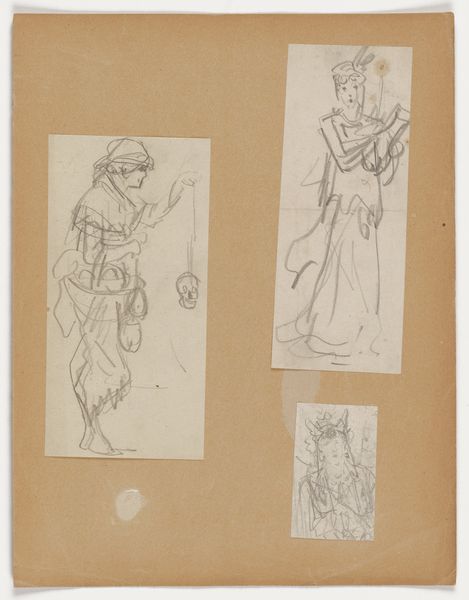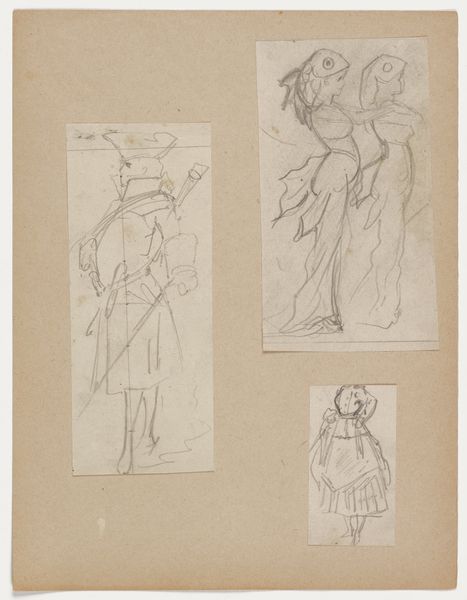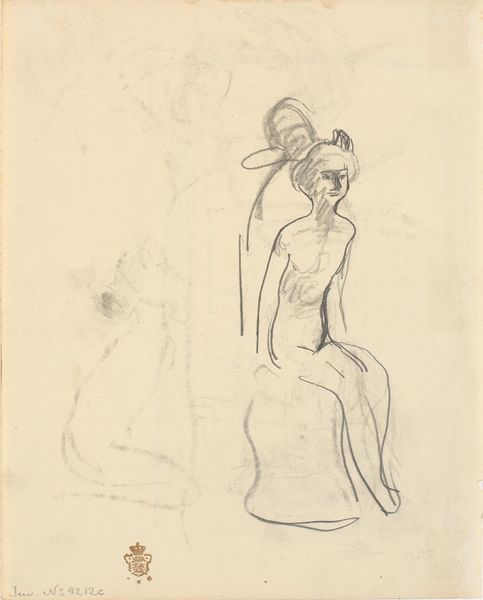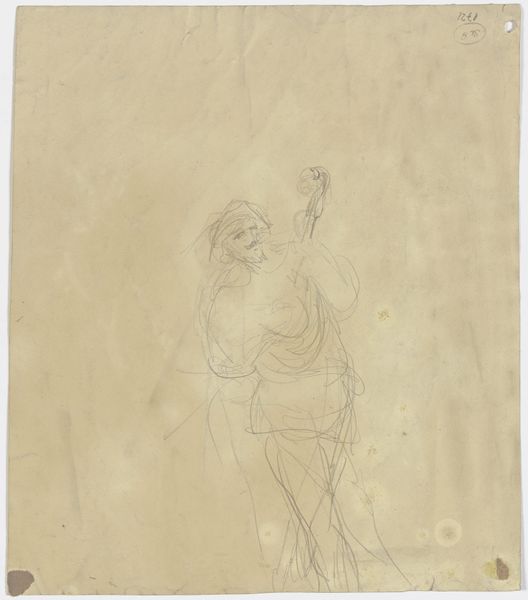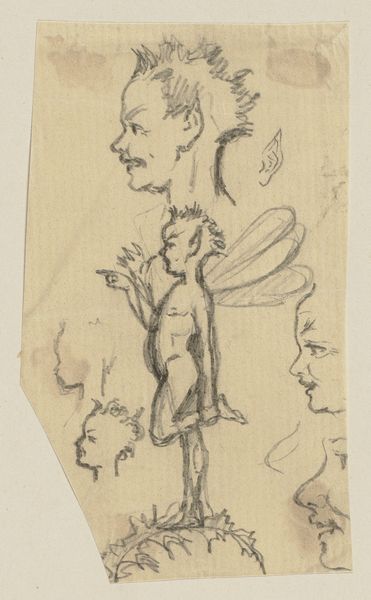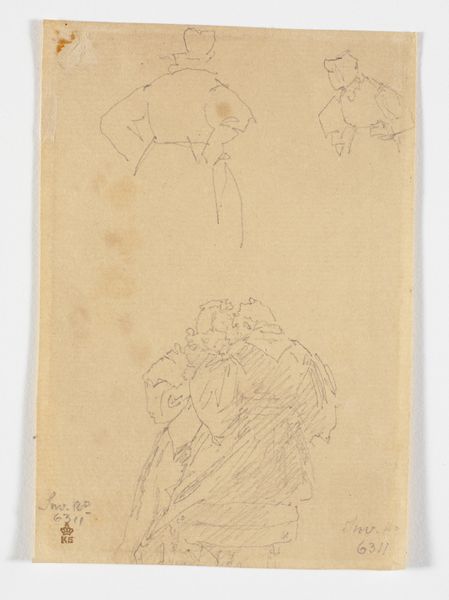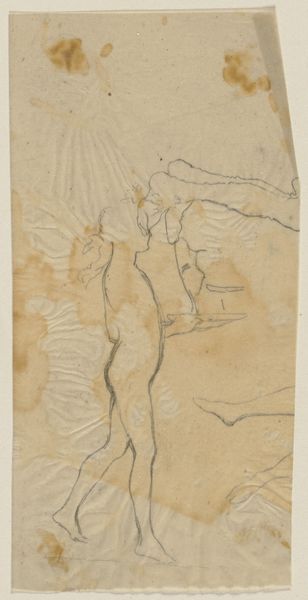
drawing, graphite
#
portrait
#
drawing
#
figuration
#
graphite
#
academic-art
Dimensions: 12 9/16 × 9 11/16 in. (31.9 × 24.6 cm) (sheet)
Copyright: Public Domain
Curator: Let’s look at this piece titled "Untitled (Drawing study)" created around the 19th century by Alfred Grévin using graphite. The composition features three distinct sketches arranged on a single sheet. What strikes you most upon first viewing this drawing? Editor: I'm drawn to the contrast in styles between the figures, and the raw energy of the lines. I notice how economical Grévin is with his strokes. How do you interpret the formal relationships between these sketches? Curator: Focusing purely on its formal aspects, the artist plays with visual weight and line quality. The sketch of the woman in what appears to be a kimono presents a denser network of lines, creating a sense of groundedness. Conversely, the other larger figure possesses a lighter touch, a delicacy in its rendering that almost makes it float. Consider also how the composition leads the eye: from the detailed kimono sketch to the lighter figure and lastly, down to the very simple face, this movement orchestrates visual harmony across the paper. What do you notice about the line work? Editor: It seems very gestural and expressive, but the strokes also create form and volume through hatching and contour lines, particularly in the kimono and the detailing on the costume. Does the formal contrast indicate a difference in intended purpose, or a commentary by the artist? Curator: Not necessarily commentary. A formalist approach guides us to study visual cues first. Notice how each sketch showcases the artist’s skillful rendering of forms with a distinctive variance in line work and texture, thereby emphasizing the material expression of each figure irrespective of social commentary. I would rather consider that, to an informed eye, that would signify mastery on the artist's behalf. What have we learned today? Editor: I now understand how analyzing an artwork's structure and composition can unlock so much about artistic skill and intentionality, and offer tangible appreciation independently of knowing context. Curator: Precisely, by analyzing the composition alone, we have already appreciated much. The art lives through its very expression.
Comments
No comments
Be the first to comment and join the conversation on the ultimate creative platform.
